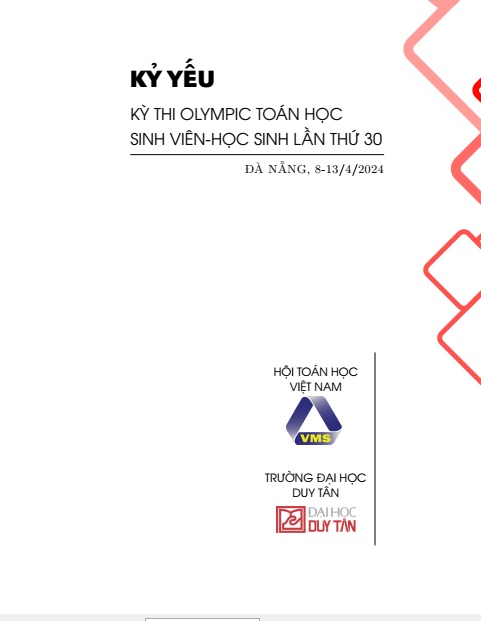Two weeks schedule: From July 20th to 28th.
Course 1: Design, analysis and modelling of computer experiments
Lectures: Bertrand Iooss (EDF R&D & Institut de Mathématiques de Toulouse, France) and Thierry Klein (Institut de Mathématiques de Toulouse, France)
Abstract:
In industrial engineering, complex numerical models (also called "computer codes") are often developed for predictive purposes, in order to increase the safety and reliability of some processes, to optimize some system performances and/or to calibrate some parameters. In this context, it is essential to quantify and to take into account the uncertainties of input parameters and input data of the simulated system. In these lectures, we will present the basics to solve problems associated to model uncertainty management:
1) How to quantify the uncertainty of the system input variables in a probabilistic framework?
2) How to propagate these uncertainties through the numerical model in order to infer the statistical properties of the system output variables? A focus will be done on the design of experiments methodology.
3) How to understand the relationship between the system inputs and outputs? This is the sensitivity analysis step and we will focus on the statistical methods of global sensitivity analysis.
4) How to approximate the computer code with a mathematical model (called "metamodel"). We will focus on the Gaussian process metamodel which allows, thanks to its stochastic nature, to give predictions with confidence levels. We will see several problems where a metamodel is needed.
All these concepts will be illustrated with real applications coming from the environment and energy domains.
Practical works will be performed within the R environment: http://cran.r-project.org/
Bibliography
- E. de Rocquigny, N. Devictor and S. Tarantola (eds). Uncertainty in industrial practice, Wiley, 2008.
- K-T. Fang, R. Li and A. Sudjianto. Design and modeling for computer experiments. Chapman & Hall/CRC, 2006.
- B. Iooss and P. Lemaître. A review on global sensitivity analysis methods. http://fr.arxiv.org/abs/1404.2405.
- A. Saltelli et al., Sensitivity analysis in practice, Wiley, 2008.
- F. Gamboa, A. Janon, T. Klein, A. Lagnoux, C. Prieur. Statistical inference for Sobol pick freeze Monte Carlo method. Submitted 2013.
- A. Janon, T. Klein, A. Lagnoux, M. Nodet, C. Prieur. Asymptotic normality and efficiency of a Sobol index estimator. Esaim Probability and Statistics. Online publication June 06 2013. http://dx.doi.org/10.1051/ps/2013040.
Course 2: Lifetime data analysis
Lectures: Jean-François Dupuy (Institut de Recherche Mathématique de Rennes, France) and Agnès Lagnoux (Institut de Mathématiques de Toulouse, France)
Abstract:
Lifetime data arise in a large variety of fields. A non-exhaustive list includes medicine, economy, engineering, social and behavioral sciences, marketing. For example, a usual application in medicine considers patients involved in a clinical trial and the objective is to evaluate a therapy based on observed times between beginning of the treatment and recovery. In marketing, one is often interested in modeling time to "churn" (or attrition) and identifying factors that explain that some consumers abandon a product or service in favor of a competitor"s.
The main complication with lifetime data (also called "survival" data) is that observations can be "censored", that is, they are only partially observed. For example, when a clinical trial evaluating a new therapy ends, some patients are still ill and the real duration until recovery is only known to exceed the observed duration.
This course introduces the statistical techniques that enable analysis and decision-making based on censored lifetime data. Topics to be covered include censoring, basic probabilistic tools for lifetime data analysis, non-parametric analysis (Kaplan-Meier estimator and log-rank testing), Cox proportional hazards modeling with fixed covariates (estimation, testing and model validation).
The emphasis of the course will be on methodology.
All the concepts above will be illustrated with real applications coming from medicine and marketing.
Practical works will be realized within the R environment: http://cran.r-project.org/.
Bibliography
- Klein, J.P., Moeschberger, M. Survival Analysis: Techniques for Censored and Truncated Data. Springer, 2003.
- Martinussen, T., Scheike, T.H. Dynamic Regression Models for Survival Data. Springer, 2006.
- Therneau, T.M., Grambsch, P.M. Modeling Survival Data: Extending the Cox Model. Springer, 2000.
http://viasm.edu.vn/hdkh/pts2015/







 Tin tức
Tin tức

